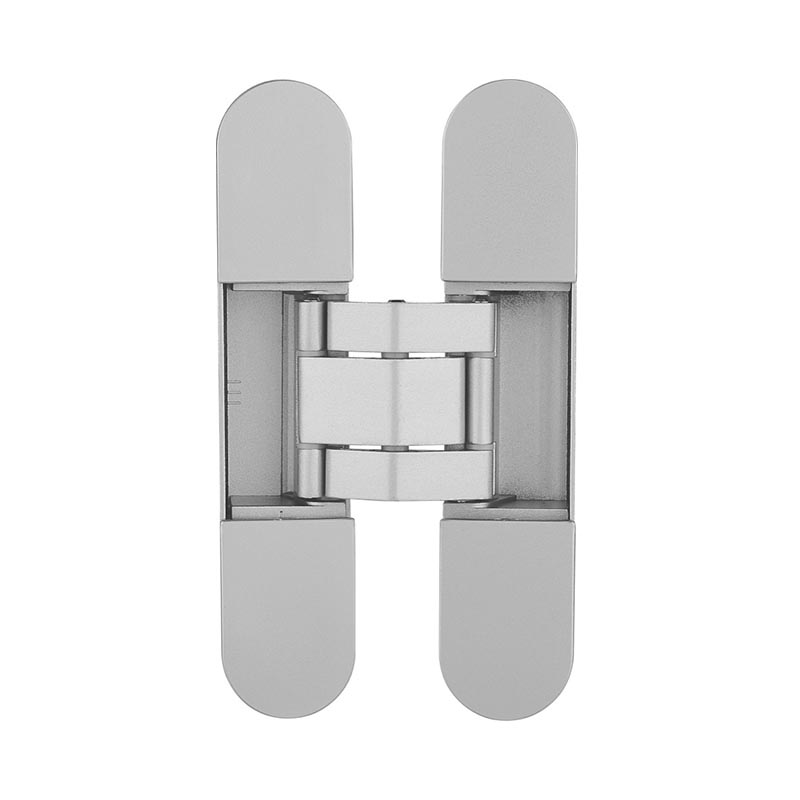Material Composition and Thermal Resilience
The durability of damping spring hinges under temperature extremes begins with their material composition. High-quality models are typically made from stainless steel or other treated alloys that resist expansion, contraction, and corrosion. These materials maintain their structural integrity across a broad temperature range, allowing the hinge to operate smoothly in both cold storage rooms and hot industrial areas. In addition to metal components, internal damping mechanisms often utilize silicone-based fluids or polymers specifically engineered to withstand temperature variations. These compounds resist hardening in the cold and thinning in the heat, ensuring consistent damping performance.

Performance in Low Temperature Environments
In low-temperature environments such as walk-in freezers or outdoor cabinets in colder climates, many mechanical systems tend to stiffen or become brittle. Damping spring hinges, if not designed for such conditions, may lose flexibility or exhibit delayed closing action. However, advanced designs compensate for this by using cold-resistant damping fluids and specially tempered springs. These components retain their elasticity and fluid movement, allowing the hinges to continue delivering smooth, silent closing even at temperatures well below freezing. Manufacturers often test hinges under simulated cold conditions to verify that their function remains reliable and safe in such settings.
Functionality in High Heat Conditions
Conversely, in high-temperature settings, such as near industrial ovens, heating equipment, or direct sunlight exposure, hinges face the risk of thermal expansion and lubricant breakdown. Excessive heat may weaken springs or cause traditional damping fluids to lose viscosity, causing either over-speed closing or sluggish operation. Damping spring hinges designed for these conditions are built with heat-tolerant materials and damping media that maintain a stable viscosity at elevated temperatures. These features prevent performance degradation and ensure that the hinge continues to provide controlled, safe motion even when exposed to continuous heat or thermal cycling.
Thermal Testing and Reliability Standards
Reputable manufacturers of damping spring hinges conduct extensive thermal performance testing to ensure reliability under real-world environmental extremes. These tests often include repeated thermal cycling, shock freezing, and prolonged heat exposure to observe any mechanical or damping failures. In many cases, the hinges are also evaluated for compliance with international standards such as ISO or ANSI, which may include temperature resilience benchmarks. Such certifications provide users with confidence that the product can handle demanding conditions without compromising performance or safety.
Applications Requiring Thermal Durability
The ability of damping spring hinges to function across a wide temperature spectrum makes them suitable for a diverse range of applications. These include cold storage equipment, industrial enclosures, commercial kitchen cabinets, transport vehicles, and even aerospace compartments. In each of these cases, dependable motion control and soft-close functionality are critical, not just for convenience, but also for safety and component longevity. The assurance that the hinge will not fail under thermal stress is a key factor in equipment design and material selection.
Conclusion
Damping spring hinges are engineered to perform consistently in both high and low temperature environments through the use of specialized materials, fluid formulations, and rigorous testing. Their ability to retain smooth motion and damping control in extreme conditions makes them a reliable choice for critical applications. Whether installed in a freezer, an oven-adjacent cabinet, or exposed to fluctuating outdoor weather, quality damping spring hinges maintain their function, ensuring longevity and operational stability in demanding environments.